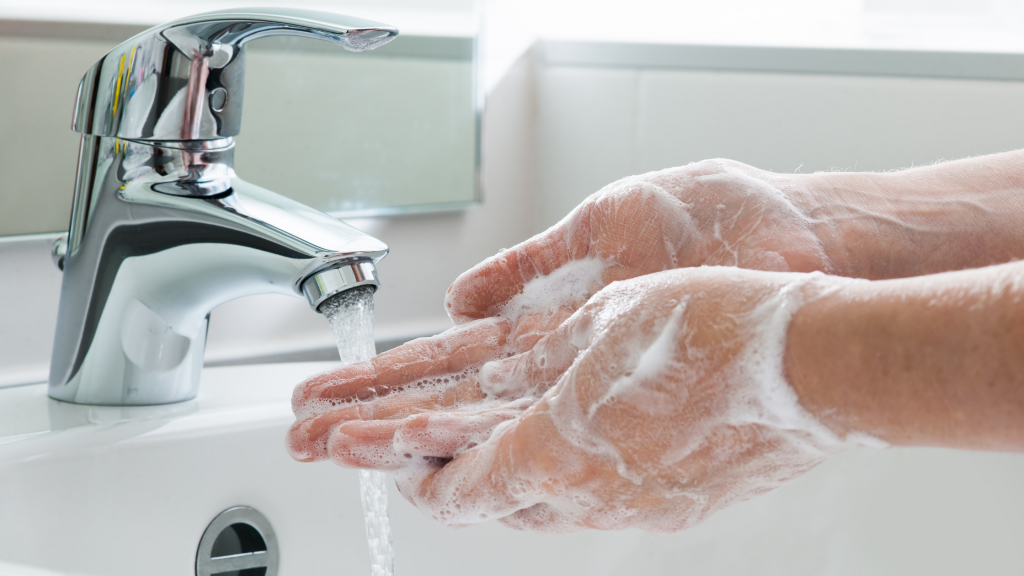Evolve is proud to support the World Health Organisation‘s global hand hygiene campaign.
This year’s campaign, starting on May 5, is focused on the prevention of health care-associated Sepsis through hand hygiene and infection prevention and control action.
Given there’s an estimated 30 million patients affected by Sepsis each year worldwide, hand hygiene is recognised as the single most important activity for an effective infection prevention and control programme.
So time to get on board – embrace the importance of implementing and strengthening your teams hand hygiene. It’s just good practice!

How germs spread
Handwashing is one of the best ways to protect yourself and your family from getting sick. Learn when and how you should wash your hands to stay healthy.
Washing hands can keep you healthy and prevent the spread of respiratory and diarrheal infections from one person to the next. Germs can spread from other people or surfaces when you:
- Touch your eyes, nose, and mouth with unwashed hands
- Prepare or eat food and drinks with unwashed hands
- Touch a contaminated surface or objects
- Blow your nose, cough, or sneeze into hands and then touch other people’s hands or common objects
Key times to wash hands
You can help yourself and your loved ones stay healthy by washing your hands often, especially during these key times when you are likely to get and spread germs:
- Before, during, and after preparing food
- Before and after eating food
- Before and after caring for someone at home who is sick with vomiting or diarrhea
- Before and after treating a cut or wound
- After using the toilet
- After changing nappies or cleaning up a child who has used the toilet
- After blowing your nose, coughing, or sneezing
- After touching an animal, animal feed, or animal waste
- After handling pet food or pet treats
- After touching garbage
The guidance for the list of key times to wash hands was developed based on data from a number of studies. There can also be other times when it is important to wash hands.
To prevent the spread of germs during the COVID-19 pandemic, you should also wash your hands with soap and water for at least 20 seconds or use a hand sanitizer with at least 60% alcohol to clean hands BEFORE and AFTER:
- Touching your eyes, nose, or mouth
- Touching your mask
- Entering and leaving a public place
- Touching an item or surface that may be frequently touched by other people, such as door handles, tables, gas pumps, shopping carts, or electronic cashier registers/screens
Wash your hands the right way
Washing your hands is easy, and it’s one of the most effective ways to prevent the spread of germs. Clean hands can stop germs from spreading from one person to another and throughout an entire community—from your home and workplace to childcare facilities and hospitals.
Follow these five steps every time.
- Wet your hands with clean, running water (warm or cold), turn off the tap, and apply soap.
- Lather your hands by rubbing them together with the soap. Lather the backs of your hands, between your fingers, and under your nails.
- Scrub your hands for at least 20 seconds. Need a timer? Hum the “Happy Birthday” song from beginning to end twice.
- Rinse your hands well under clean, running water.
- Dry your hands using a clean towel or air dry them.
Use Hand Santizer
You can use an alcohol-based hand sanitizer that contains at least 60% alcohol if soap and water are not available.
Washing hands with soap and water is the best way to get rid of germs in most situations. If soap and water are not readily available, you can use an alcohol-based hand sanitizer that contains at least 60% alcohol. You can tell if the sanitizer contains at least 60% alcohol by looking at the product label.
Sanitizers can quickly reduce the number of germs on hands in many situations. However,
- Sanitizers do not get rid of all types of germs.
- Hand sanitizers may not be as effective when hands are visibly dirty or greasy.
- Hand sanitizers might not remove harmful chemicals from hands like pesticides and heavy metals.
Swallowing alcohol-based hand sanitizers can cause alcohol poisoning if more than a couple of mouthfuls are swallowed. Keep it out of reach of young children and supervise their use.
How to use hand sanitizer
- Apply the gel product to the palm of one hand (read the label to learn the correct amount).
- Rub your hands together.
- Rub the gel over all the surfaces of your hands and fingers until your hands are dry. This should take around 20 seconds.
Laboratory life
In the laboratory, it is vital you practice good hand hygiene and remember to wash your hands at regular intervals during the day to prevent the spread of germs and viruses.
Handwashing is extremely powerful at slowing down the spread of bacteria. Hands should be washed frequently including before and after wearing a facemask and after touching surfaces with our bare hands.
Facts and figures
- Appropriate hand hygiene prevents up to 50% of avoidable infections acquired during health care delivery, including those affecting the health work force.
- Appropriate hand hygiene reduces the risk on SARS-CoV-2 – the virus that causes COVID-19 – infection among health workers.
- 1 in 3 facilities lack hand hygiene facilities at the point of care.
- Globally, out of every 100 patients, 7 in developed and 15 in developing countries will acquire at least one infection in acute care hospitals.
How we’ve helped others
We’ve already helped businesses like yours
Get your science project started today
Whether you’re still in the ideas phase of a new science-led project or are looking to grow, Evolve will help you confidently take your next steps.
Tap into our team of experts, here to guide you through our products, services and planning. If you need to speak with us right away, call us or visit our Support Centre page. You’ll be glad you did.


